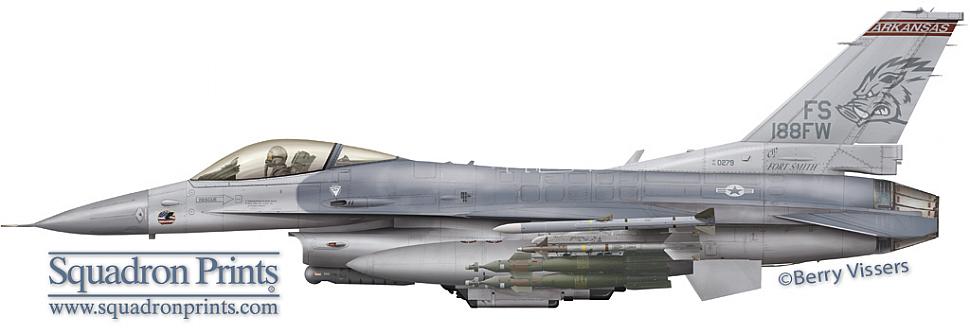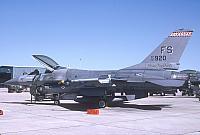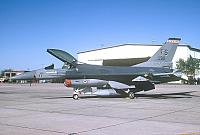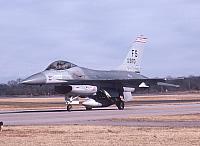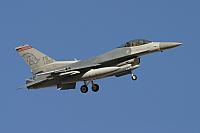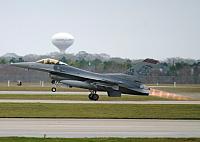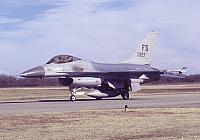 |
184th Fighter Squadron ( USAF ANG)" Flying Razorbacks" |
 |
184 FS " Flying Razorbacks" ( USAF ANG) | |||
| Status: |
Converted
|
|||
| Version: | F-16C block 32 | |||
| Role: | Air Defense, Attack | |||
| Tailband: | Red | |||
| Motto: | N/A | |||
| Badge: | N/A | |||
|
Converted to the A-10A on April 14th, 2007.
|
||||
F-16 History
First F-16 delivery to the squadron was on July 1st, 1988 and the formal acceptance of the F-16 happened on October 15th, 1988. On March 15th, 1992 the 184th dropped the Tactical name from the squadron.
In early 2001 the 184th FS began to retire its F-16A/B block 15s to AMARC in exchange for F-16C block 32s. They never received any D-models. Because the squadron flew the rarely seen block 32, the squadron became a source for spare F-16s for the USAF Thunderbirds flight demonstration team. In the end the 184th FS never had to give up any of their aircraft as the Thunderbirds took needed aircraft from home based 57th Fighter Wing.
In early 2005 the 184th FS was preparing to take the TARS pod to Iraq but requested that they be able to carry the TARS pod in conjunction with a targeting pod. This combination had not been certified and the tight deadline that this needed to be completed by forced Air Force Material Command to find a way to get this done quickly. The 40th Test Squadron at Eglin AFB, Florida was tasked with the job. As there were three possible configurations, LANTIRN, LITENING and Sniper, it was decided to choose the pod that would be the most troublesome and only test fly that one. Lockheed Martin was consulted and in the end the LANTIRN pod was chosen for the test. The 40th TS was to facilitate the test flight but equipment availability caused the 40th TS to look at the 107th FS who use the TARS pod operationally. Members of the 40th TS traveled to Selfridge to use both aircraft and pods of the 107th FS. A flight test sortie was quickly put together. When the aircraft returned to Selfridge a quick external examination was done on the TARS pod and all appeared okay. Closer inspection showed that the ECS scoop, located immediately in-line to the LANTIRN pod, was damaged and insulation torn. An exact cause of the problem could not be determined and the time limit required for the 184th FS to meet its deployment date. The short-term solution was put forward to keep airspeed below 0.95 Mach in this configuration and warn that scoop failure could still reoccur. A second flight in a 107th FS aircraft was successful under the above mentioned restriction and the certification of the TARS with targeting pod was made. The 184th FS was able to obtain its request for capability in enough time for the deployment.
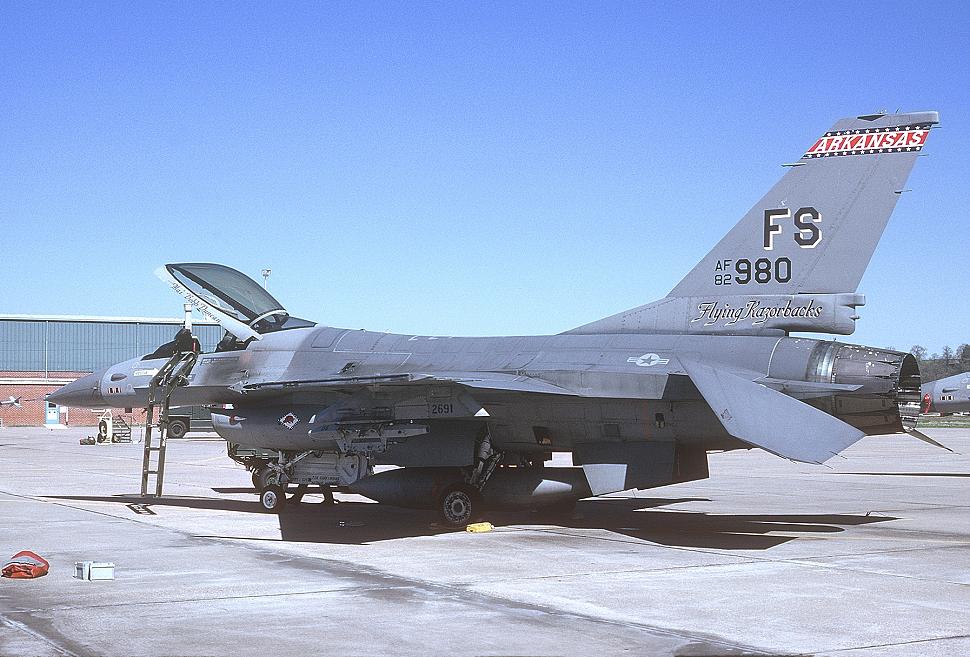
Many units were effected by the 2005 Base Realignment and Closure panel and the 184th FS was no exception. Initially it was decided that the squadron would loose all aircraft and shut down. With a great deal of effort by Arkansas' leaders caused the BRAC panel to change its decision on the 184th FS and give it a new mission. The squadron would still loose its F-16s but in their place would get a total of eighteen A-10s. One of the deciding factors was Fort Smiths location near Fort Chaffee, a former National Guard training post. This location is a perfect spot for the A-10 to practice its low-flying air-to-ground mission. On October 18th, 2006 the 184th FS began giving up F-16s when two departed for the 194th FS located in California. By April of 2007 the 184th FS had already begun to receive the A-10 and pilots had already commenced cross training back in October. On April 14th, 2007 the 184th FS marked the day with a celebration 'Viper Out/Warthog In' day. The 184th FS took the opportunity to display their new A-10 paint scheme and to still fly the F-16 but the 184th FS at this point was officially an A-10 unit. The A-10s themselves came from the Massachusetts and Connecticut ANG. The last vipers, #86-0238 and #86-0285 departed on April 28th, 2007.
Although the unit is loosing its F-16s the squadron is very happy to still be in the flying business. The A-10 nicknamed 'Warthog' will fit in well with the 184th FS and even fits the squadrons mascot perfectly.
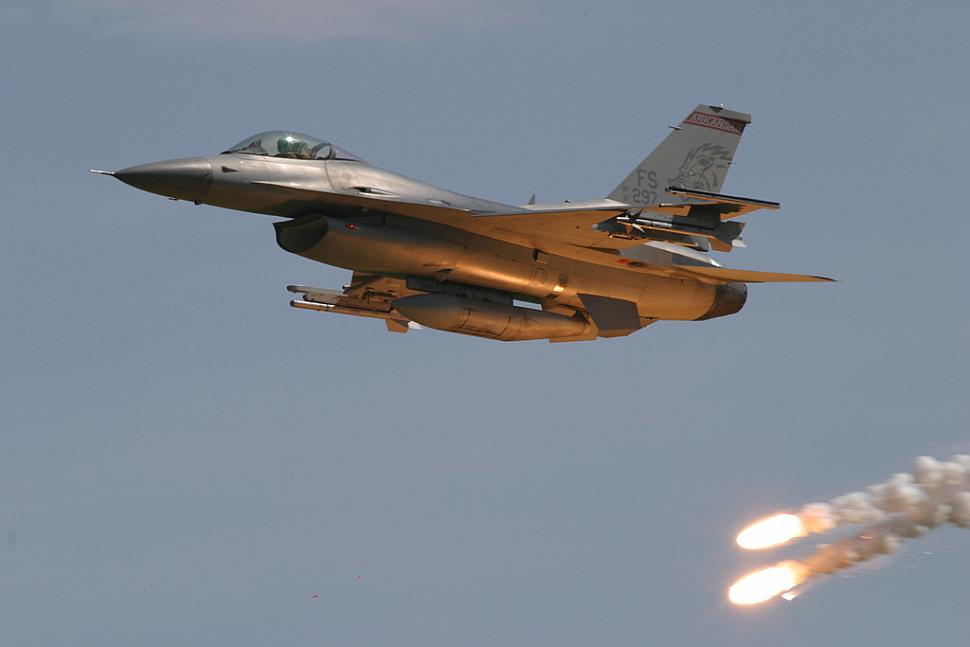
Aircraft Markings History
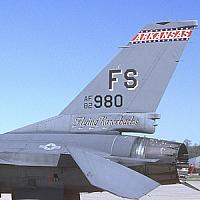
A red tail band with the state name in white letters boardered with a blue strip on the top and bottom containing white stars. The 'FS' tail code stands for Fort Smith, the city for which the squadron is based.
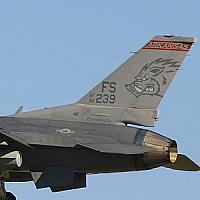
A red tail band with the state name in white background gray. The 'FS' tail code stands for Fort Smith, the city for which the squadron is based. The tail code and serial number were moved to the lower forward section of the tail to give more room for a stylized head of a wild bore. At the base of the tail is often a city name dedicated to one of the cities in the surrounding area. This was carried on the F-16A/Bs before they were retired.
Unit History
- 1953: Activation of the squadron in Fort Smith, Arkansas
- 1953: RB-26C 'Invader'
- 1956: RF-80A 'Shooting Star'
- 1957: RF-84F 'Thunderstreak'
- 1962: RF-84F 'Thunderstreak' (part of 188 TRG)
- 1970: RF-101C 'Voodoo'
- 1972: F-100D/F 'Super Sabre' (part of 188 TFG)
- 1979: F-4C 'Phantom II'
- 1988: F-16A/B 'Fighting Falcon' (part of 188 TFW)
- 1992: F-16A/B 'Fighting Falcon' (part of 188 FW)
- 2001: F-16C/D 'Fighting Falcon'
- 2007: Converted
Deployments
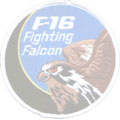 |
' Decisive Edge' |
| Aviano AB, Italy (May of 1996 to June of 1996) | |
| Operation Decisive Edge began on December 22nd, 1995 and was a follow-on to Operation Deny Flight. The operation was a United Nations mandated no-fly zone for the airspace over Bosnia-Herzegovina. On December 21st, 1996 Operation Decisive Edge transitioned to Deliberate Guard. The squadron purely deployed in a recce role with the newly recce pod. | |
 |
' Southern Watch' |
| Prince Sultan AB, Saudi Arabia (October 24th, 2002 to December of 2002) | |
| Operation Southern Watch was an operation which was responsible for enforcing the United Nations mandated no-fly zone below the 32nd parallel in Iraq. This mission was initiated mainly to cover for attacks of Iraqi forces on the Iraqi Shi’ite Muslims. | |
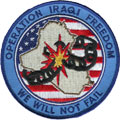 |
' Iraqi Freedom' |
| Balad AB, Iraq (May of 2005 to September of 2005) | |
| Operation Iraqi Freedom was initiated in March of 2003 to drive Saddam Hussein from reigning Iraq. Over the next years, multiple units where tasked to perform air cover over Iraq in the wake of this war. This was a rainbow deployment along with the 111th FS and the 179th FS for AEF 5/6 rotation. The other squadrons were block 25s but still very compatible with the 184th FS block 32s. When they departed they were replaced by the 93rd Fighter Squadron. |
F-16 Airframe Inventory
- All 184 FS F-16s in our F-16 Aircraft Database (past and current aircraft)
- Current 184 FS F-16s in our F-16 Aircraft Database
Photos
Please use this form to add any list any error or omissions you find in the above text.
Note: your comments will be displayed immediately on this page. If you wish to send a private comment to the webmasters, please use the Contact Us link.

